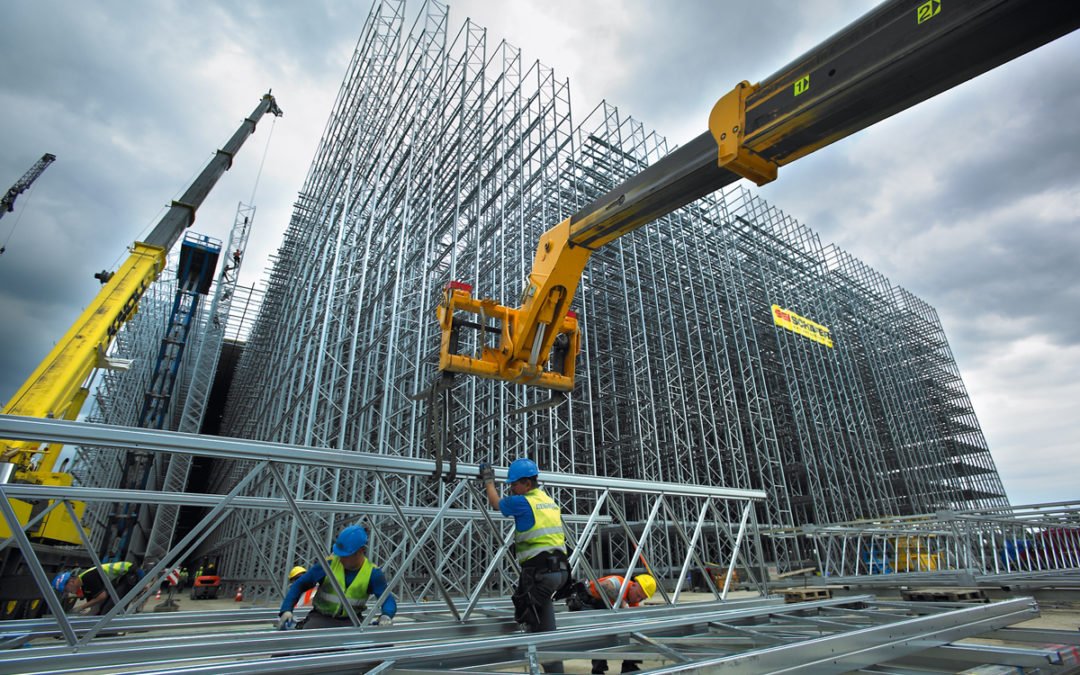Background
Aluminum was virtually unusable in civil engineering around the turn of the last century because the metal was too expensive and not manufactured in adequate quantities. When the electrolysis technique decreased the cost of aluminum by 80% in the 1920s, everything changed. The metal was widely used to finish roofs and domes, as well as for drains and wall panels, and also for aesthetic purposes.
Aluminum products respond well to polishing and anodizing and may take on any coloration, which is a feature that designers admire. Additionally, anodizing strengthens the metal’s anti-corrosion protection.
Introduction
After steel, aluminum is the second most commonly specified metal in structures, and it is utilized in all types of construction, from commercial to residential. The construction industry uses 40% of the UK’s annual aluminum production, which translates to nearly 150,000 tonnes of aluminum per year, with approximately 65,000 tonnes of extruded products and 25,000 tonnes of rolled products.
Features and Benefits Aluminium gives to the Construction Industry
- Alloys: Pure aluminum is a low-strength metal, making it unsuitable for construction, but with the addition of alloying elements such as copper, manganese, magnesium, zinc, and other metals, it can be used in construction.
- Longevity: Aluminum alloys for construction are resistant to water, corrosion, and the detrimental effects of UV radiation, assuring long-term durability.
- Low-cost maintenance: Whether it is raw or coated aluminum, it does not require any extra upkeep.
- Finishing: Because aluminum can be anodized or lacquered in any color, it may produce a wide range of effects and so suit the designer’s decorative requirements. Aluminum treatments can improve the material’s durability and corrosion resistance.
- Aluminum is a non-flammable metal: Aluminum is classified as a non-combustible material since it does not burn.
Which Aluminum is Best for Construction?
Extrusions made of 6063 aluminum are popular. 6063 aluminum has a higher melting temperature, thermal conductivity, and heat capacity than 6061 aluminum.
Aluminum 6063 offers a greater surface polish than Aluminum 6061, making it a better choice for architectural applications. Architectural aluminum, or alloy 6063, can be softly anodized to give an attractive, colorful finish for visual architectural and building applications.
Because high strength is not the most critical aspect, 6063 Aluminum is commonly used for window frames, door frames, roofing, and sign frames. It’s also found in electrical components and conduits, irrigation pipe and tube, architectural and building items, railings, furniture, appliances, yachts, and automobiles. 6063 is typically employed in exposed applications due to its corrosion resistance. It withstands the elements better than 6061 and is hence more corrosion resistant.
What are Aluminum 6063 Forged Fittings?
Aluminum is used widely in industry. Forged fittings are used where features must be created by deburring or manufacturing on a plate, such as in the case of window frames. The plate must be thin, stiff, and strong enough to withstand handling without distortion, yet flexible enough to permit a good range of glazing materials to be used.
Aluminum is used extensively in the manufacture of parts for machines and equipment as well as many household appliances. Copper and nickel have also become very important in industry as their low weight makes them useful in forming some of the most important components for all sorts of machinery. Main Forged Fittings include elbow, flange, tee, union, coupling, cap, etc.
Aluminium Alloy 6063 has a wide variety of mechanical and corrosion-resistant properties, as well as the majority of aluminum’s positive characteristics. From aircraft structures to building to screw machine parts, Aluminium Alloy 6063 Forged products are utilized in a variety of applications.
If you would want to have a deeper knowledge of aluminum you should also read about aluminum bronze composition and how it would be beneficial in the construction industry.
Aluminum Bronze
Aluminum bronze, which replaces tin in other varieties of bronze, is composed of 6-12 percent aluminum. The rest is copper, with the addition of other elements such as iron, silicon, or nickel to improve the metal’s characteristics. The strength and corrosion resistance of this material has led to its usage in the maritime, chemical, and energy industries. Aluminum bronzes are classified into alloy groups based on the amount of aluminum and other elements in the metal.
Aluminum bronze’s strength and corrosion resistance are its most notable characteristics, but its attributes vary depending on the metal’s shape and alloy. The strength of aluminum bronze, which is comparable to low alloy steels, varies depending on the metal’s shape. The other most important quality of aluminum bronze is its corrosion resistance, which is superior to that of stainless steel, particularly in seawater.
Conclusion
These are just a few of the benefits of using aluminum in terms of technical growth, the extraordinary characteristics of this metal will provide (potentially) endless alternatives for engineering applications.
For more understanding, check out the other blogs on our website. You will learn a lot about steel and which should be the right choice for your construction ahead. Dinesh Tubes promises that it would always be the pillar behind your choices regarding choosing the right metal for your construction needs. Keep reading on our websites and our blogs that are specifically dedicated to your choices and would cater to your needs.


Recent Comments